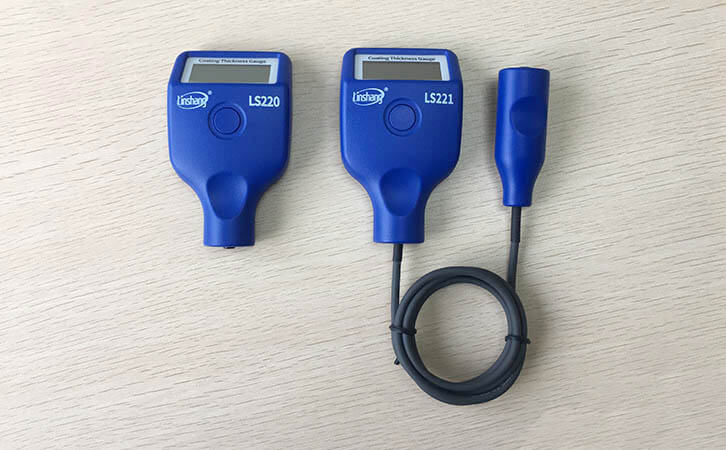Classification and Application of Coating Thickness Gauge
Coating thickness gauge is also called paint thickness gauge, coating thickness meter or paint film thickness gauge. Different types of coating thickness gauges can detect the surface of metal substrates by magnetic method, eddy current method, ultrasonic method, electrolytic method and radiation method. The coating thickness gauges with different principles have different accuracy.
1. Coating thickness gauge classification
Commonly used coating thickness gauges generally use magnetic thickness measurement and eddy current thickness measurement principles. Relatively speaking, although the coating principles of the two principles are the same, the measurement accuracy of the magnetic method is slightly higher, but this kind of measurement principle also has certain limitations.
The magnetic method can be used to detect the non-magnetic coating (such as paint, powder coating, porcelain coating, chrome plating, copper plating, zinc plating on iron plates)thickness sprayed on various magnetic metal substrates (such as steel materials). The eddy current method can detect the thickness of all insulation coatings sprayed on non-magnetic metal substrates (such as aluminum, copper, brass, stainless steel, etc).
Therefore, the common coating thickness gauges have different measurement functions. It can be divided into iron-based coating thickness gauges, aluminum-based coating thickness gauges, dual-purpose coating thickness gauges. According to the form of the probe, they can be divided into integrated and split.
Although the measurement principles are different, most of the coating thickness gauges use the same method. Users can quickly detect the thickness of steel plate coatings or aluminum plate coatings in the following ways.
2. How to use coating thickness gauge?
(1) Start
Press the power button on the coating thickness gaugeto start up. The interface with backlight will show the instrument information when the machine is turned on. The buzzer will give an alert. When some instruments have low power, an alarm will be issued.
(2) Calibration
Single-point calibration and multi-point calibration can be used to accurately calibrate the instrument. The method of using a good coating thickness gauge is relatively simpler. Perform zero adjustment after starting up. For example, there is no need for calibration such as Linshang coating thickness gauge.
(3) Measurement
After the instrument is calibrated, you can start measuring. During the measurement, pinch the groove of the instrument with your hand, press the probe vertically on the test object. The measurement result can be displayed on the screen.
Specifically, different types of instruments are suitable for measuring different substrates. When using single iron-based or single aluminum-based coating thickness gauges, they can only test for materials with specific properties. The dual-use coating thickness gauge can test substrates such as iron and aluminum. The user must get to know the performance of the instrument when measuring. The coating thickness gauge used for iron and aluminum is the same as the ordinary thickness gauge, but the applicable materials are more extensive. And the coating thickness gauge price will not be too high. Therefore, it is generally recommended that users choose a dual-purpose coating thickness gauge for both iron and aluminum.
- High precision coating thickness gauge for used car
- Automotive paint protection films coating thickness gauge
- Plating Thickness Measuring Instrument for Detecting Anti-corrosion Coating
- Linshang LS220, LS191, LS160A– Necessary for Car Cover Inspection
- Coating Thickness Gauge for Second Hand Vehicle
- Zero Adjustment Step of Coating Thickness Gauge
